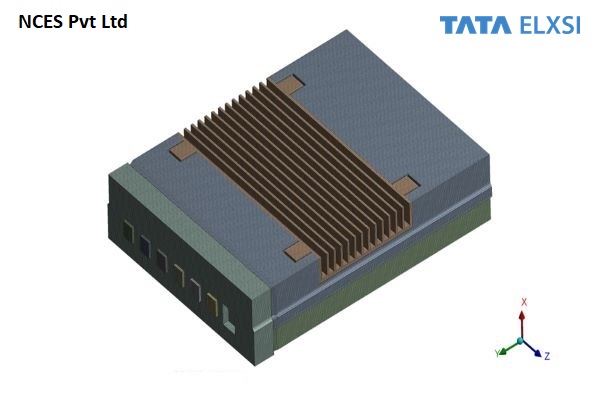PROJECT OVERVIEW
Our esteemed Client is a subsidiary of the renowned TATA group, which happens to be India's largest conglomerate. They are currently engaged in the development of a cutting-edge 5G Remote Radio Unit (RU) that complies with the ORAN 7.2x standards. Recognizing our expertise in the field, the Client has entrusted us with the responsibility of conducting Finite Element Analysis (FEA) for an assembly comprising the Remote Radio Unit, mounting pole, and antenna. The primary objective of this analysis is to thoroughly examine the dynamic behavior of the Remote Radio Unit and ensure its optimal performance and reliability, in strict accordance with the industry standards outlined in ETSI EN 300 019-2-4 V2.4.1. We are honored to have been chosen for this significant project and are committed to delivering exceptional results. In this project, we performed FEM analysis to check strength of the triband antenna model for the given load conditions. FEM analysis is carried out as per the load conditions provided by the customer. We carried out Modal Analysis, Sine sweep Analysis (Harmonic Analysis), Random Vibration Analysis, Shock Analysis, Seismic Analysis, and Wind load Analysis.
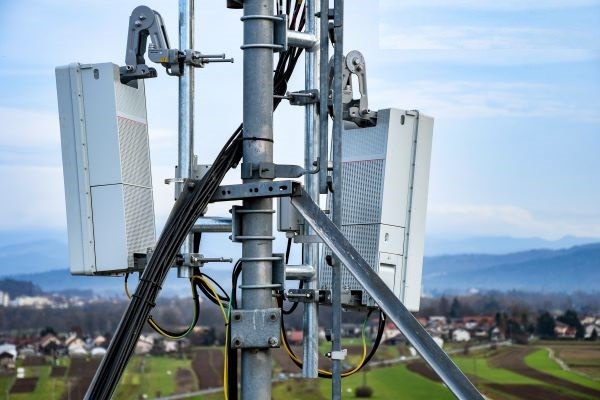
ETSI EN 300 019-2-4 V2.4.1 STANDARDS
In the Telecom Industry, the European Telecommunication Standards (ETSI EN 300 019-2-4 V2.4.1) is widely recognized as a standard of utmost importance. It plays a critical role in ensuring the reliability and performance of equipment. By delving into this standard, Engineers can develop a comprehensive understanding of its significance and how it contributes to maintaining equipment integrity in various environmental conditions.
FEA MESH
FEA model of the enclosure assembly of Triband Antenna consists of approximately 3.8 million nodes and 2.1 million elements, utilizing higher order Tetrahedral and Hexahedral elements. To ensure proper functionality, appropriate contacts have been defined between all the parts in the assembly. Furthermore, the necessary material properties and boundary conditions have been applied.
FEM ANALYSIS CASES CONSIDERED
Sine Sweep Analysis in X, Y and Z directions Random Vibration Analysis for Test Severity Shock Analysis for Characteristic Severity & Test Severity Seismic Analysis for Zone 4 as shown in the curve Wind Load Analysis for different mounting condition
Modal Analysis: Modal Analysis looks for Natural Frequencies and Normal modes of a structure. We can find the natural frequencies of an object so that we can create or avoid resonance. 99% of the time we want to avoid resonance to protect the structure.
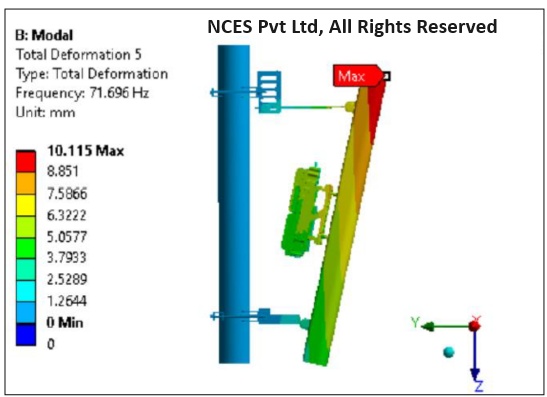
HARMONIC ANALYSIS RESULTS
Detailed report explaining factor of safety calculations, Stress plots, deformation, Frequency- acceleration response graph is submitted to the Client.
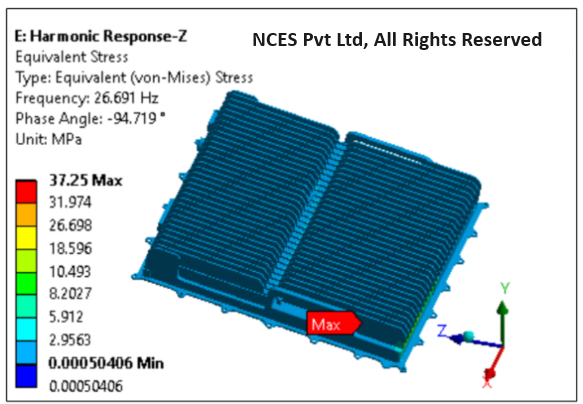
We Got More
Go through All Our Case Studies
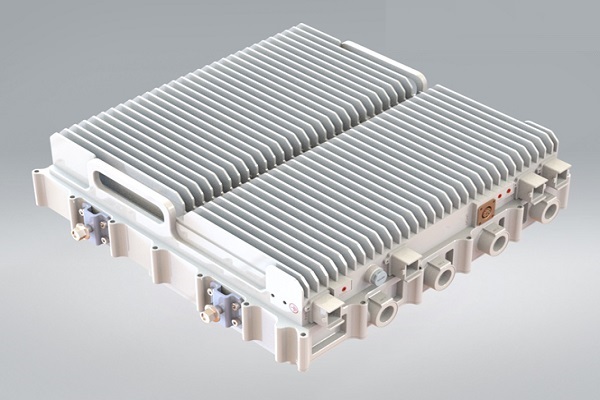
CFD analysis of Multi Band Remote Radio Unit
The advent of 5G technology has brought about unprecedented advancements in wireless communications, enabling faster speeds, lower latency, and increased capacity. These advancements are associated with higher power consumption and increased heat generation in the 5G Remote Radio units.Increasing data rates and network densification require radio units to process larger volumes of data, leading to higher power consumption and heat generation. Environmental factors such as ambient temperature, humidity, and exposure to direct sunlight also impact the thermal aspects of the radio units. Read More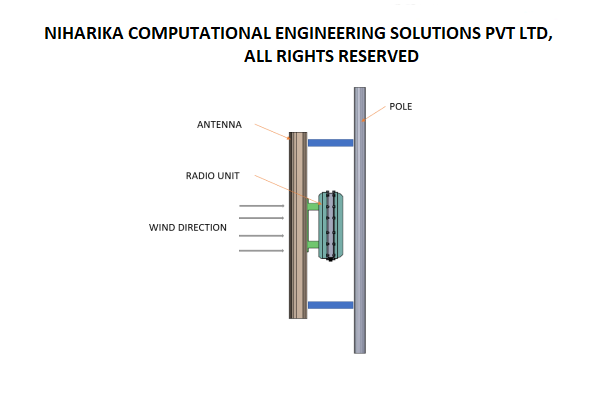
Wind Load analysis for multiband 5G Remote Radio Unit with Antenna using CFD
The seamless operation of base station antennas is of utmost importance for efficient and reliable communication networks. However, these antennas are constantly exposed to various environmental factors that can affect their performance and structural stability. Among these factors, wind load plays a significant role. Read MoreDEVELOPMENT OF COOLING SOLUTION FOR GaN RF POWER AMPLIFIER
The demand for high-power and efficient radio frequency (RF) power amplifiers has been steadily increasing across various industries, including wireless communications, radar systems, and satellite communication. GaN (Gallium Nitride) technology has emerged as a game-changer in RF power amplification due to its exceptional performance characteristics and advantages over traditional technologies. GaN technology offers higher power density, improved efficiency, and wide bandwidth capability, setting it apart from traditional technologies like GaAs (Gallium Arsenide) or SiC (Silicon Carbide). Read More
AERODYNAMICS ANALYSIS OF TELECOM TOWER STRUCTURE
By meticulously considering the principles of aerodynamics in the design of telecom towers, engineers can effectively reduce wind induced vibrations. This not only enhances the overall experience for everyone but also guarantees the towers long term structural integrity and stability. Read More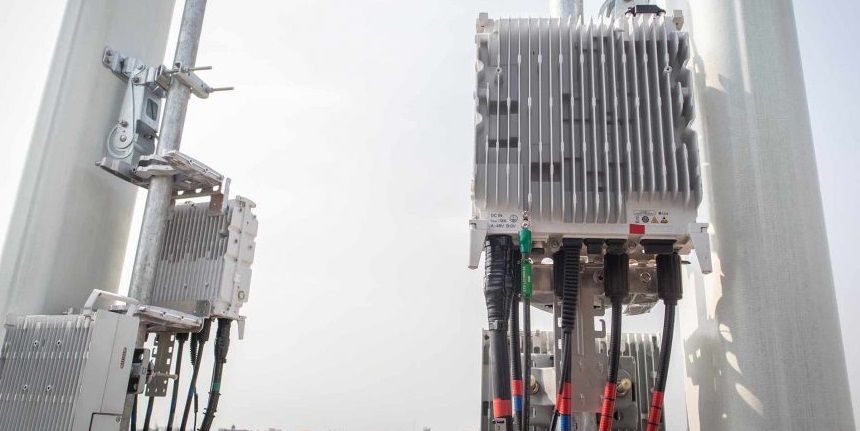
Structural analysis for Triband Radio unit with antenna
In this project, we performed FEM analysis to check strength of the triband antenna model for the given load conditions. FE mesh consists of higher-order Tet elements & Hexahedral elements. Mesh size is 2810173 nodes & 1611495 elements. Appropriate contacts are modeled between all the parts in the assembly. FEM analysis is carried out as per the load conditions provided by the customer. We carried out Modal Analysis, Sine sweep Analysis (Harmonic Analysis), Random Vibration Analysis, Shock Analysis, Seismic Analysis, and Wind load Analysis. Read More